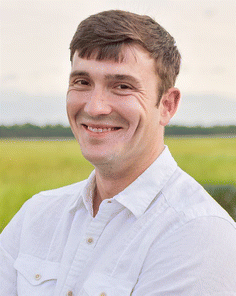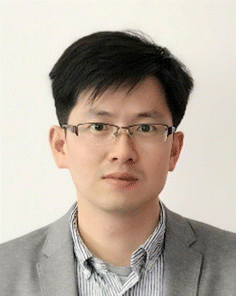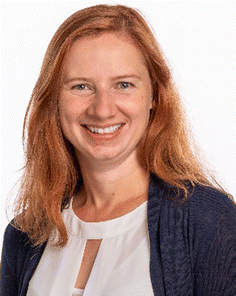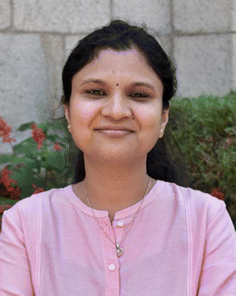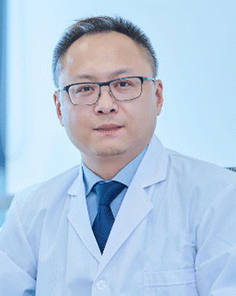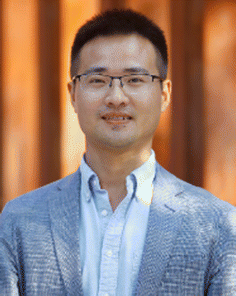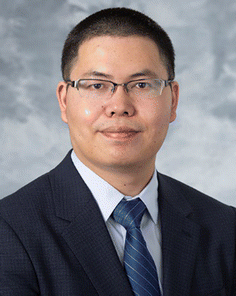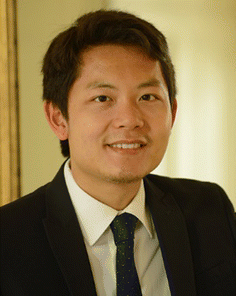DOI:
10.1039/D5CS90030A
(Profile)
Chem. Soc. Rev., 2025,
54, 3608-3615
Contributors to the 2024 Emerging Investigators collection
Ana E. Platero-Prats is a group leader at the Universidad Autónoma de Madrid (UAM). Her research centers on the design and advanced characterization of hybrid porous materials, particularly metal– and covalent–organic frameworks, for applications in environmental remediation and catalysis. Ana is deeply fascinated by the atomic structure of materials, and she leverages synchrotron techniques, such as pair distribution function (PDF) analysis, to reveal the intricate structural details that govern their properties. During her PhD at the Institute of Materials Science of Madrid (ICMM-CSIC), she conducted research at the Institute Lavoisier de Versailles (CNRS) and the Università degli Studi di Milano. She later joined Stockholm University in 2012 and Argonne National Laboratory in 2014 as a postdoctoral researcher. Throughout her career, Ana has received several prestigious grants and awards, including the Young Group Leader Award from the Spanish Royal Society of Chemistry. Outside of science, she is also a mother of two girls, which has taught her that mastering time management is, in itself, an exact science.
A. J. Medford is an Associate Professor of Chemical Engineering at Georgia Tech. Raised near Charlotte, North Carolina, he earned a BS in Textile Engineering from NC State University. His interest in energy systems began with undergraduate research on textile battery materials with Prof. Xiangwu Zhang and electrocatalysis during an REU at Stanford with Prof. Tom Jaramillo. Awarded a Fulbright fellowship, he studied polymer solar cells at Risø Labs and the Technical University of Denmark under Prof. Frederik Krebs. During his PhD at Stanford with Prof. Jens Nørskov, he shifted focus to computational catalysis and developed an interest in machine learning and statistics, which inspired his postdoctoral work with Prof. Surya Kalidindi at Georgia Tech.
Currently, his research integrates electronic structure theory, machine learning, and statistics to address challenges in catalysis, surface science, and kinetics. He has developed machine learning methods for exchange correlation functionals, interatomic potentials, and kinetic model fitting, and has applied these tools to problems ranging from photocatalytic nitrogen fixation to biomass conversion. Outside of academia, he enjoys spending time with his wife and two daughters, especially hiking, swimming, and paddle boarding. Always eager to learn, he is currently attempting to master surfing and Spanish, finding both pursuits more challenging than his research.
Ayala Lampel is an Associate Professor in the Shmunis School of Biomedicine and Cancer Research at the Faculty of Life Sciences, Tel Aviv University, Israel. She earned her PhD in Biotechnology and BSc in Neuroscience from Tel Aviv University. Following her doctoral studies, she conducted postdoctoral research at the Advanced Science Research Center (ASRC), City University of New York (CUNY), where she developed bioinspired supramolecular peptide materials, with a particular focus on melanin-inspired materials.
In 2019, Ayala returned to Israel to establish her independent research group at Tel Aviv University as an Assistant Professor. She is also a fellow at the Leibniz Institute of Polymer Research Dresden (IPF Fellow). Her contributions to the field have been recognized with several prestigious awards, including the ERC Starting Grant and the Nanomaterials 2024 Young Investigator Award.
Her research group focuses on the design and investigation of phase-separated materials and biomolecular condensates for applications in drug delivery, biosensing, and catalysis.
Ayala lives in Tel Aviv with her husband and three young children. She enjoys cycling to work, traveling, and painting.
Ben Liu is a professor of chemistry at Sichuan University. He received his PhD in Applied Chemistry from Shanghai Jiao Tong University in 2013, followed by Postdoctoral training at the University of Maryland (2013–2014) and the University of Connecticut (2014–2017). After starting his independent career at Nanjing Normal University for four years, he moved to his current position in 2021. He has been awarded the titles of 2023 Young “Chang Jiang Scholar” and 2017 Jiangsu Specially-Appointed Professor, and has also been recognized as a 2023
Adv. Mater. Rising Star and 2021
J. Mater. Chem. A Emerging Investigator. Currently, Dr Liu leads research on developing synthetic methodologies of functional mesoporous metals and exploring their applications in (electro)catalysis and energy conversion. Outside of academic life, he enjoys travelling with good friends and spending time with his family.
Caterina Ramogida is an Associate Professor of Chemistry at Simon Fraser University (SFU) and holds a joint appointment with the Life Sciences Division at TRIUMF – Canada’s particle accelerator centre. A first-generation university graduate, born and raised in British Columbia, Canada, Caterina completed her BSc in Chemistry in 2010 from SFU, received her PhD in 2015 from the University of British Columbia in Medicinal Inorganic Chemistry, then completed a postdoc in radiochemistry at TRIUMF before coming full circle and starting her independent career at SFU in 2018. Her research blends her interests in inorganic chemistry with applications in nuclear medicine – topics that she was first introduced to as an undergraduate nuclear science student.
Caterina leads an interdisciplinary research program in nuclear medicinal inorganic chemistry, with a particular interest in developing theranostic radiopharmaceuticals with exotic radioactive metal ions for the diagnosis and treatment of cancer. This includes the design, synthesis, and characterization of bifunctional chelating ligands for exotic therapeutic and diagnostic radiometals, the production and purification of medically relevant radiometals, and preclinical evaluation of radiopharmaceuticals for imaging and therapy of various cancer types.
In her spare time, Caterina spends time with her family, chauffeuring her two young children to their various extra-curricular activities.
Dr Dawei Feng is an Assistant Professor in the Department of Materials Science and Engineering at the University of Wisconsin-Madison. He earned his PhD in Chemistry from Texas A&M University under the mentorship of Prof. Hong-Cai Zhou, focusing on metal–organic frameworks for catalysis and gas storage. He then completed postdoctoral research with Prof. Zhenan Bao at Stanford University, investigating hybrid organic–inorganic materials for energy storage applications.
At UW-Madison, Dr Feng leads a research group dedicated to the design and synthesis of molecular redox-active materials and solid-state ion conductors, aiming to advance energy storage technologies such as redox flow batteries and electrochemical systems. His work has been featured in high-impact journals, including Nature, Nature Energy, and ACS Energy Letters. His contributions to the field have been recognized with several awards, including the NSF CAREER Award (2021) and the ACS Division of Inorganic Chemistry Young Investigator Award (2016).
Beyond his academic pursuits, Dr Feng co-founded Flux XII, a startup focused on developing next-generation redox flow battery technologies. In his personal time, he enjoys basketball and tennis, balancing the fast-paced nature of sports with his passion for tackling complex energy challenges through research.
Dechao Geng has been a Professor at Tianjin Key Laboratory of Molecular Optoelectronic Sciences, Department of Chemistry, School of Science, Tianjin University, since 2019. Before that, he had postdoctoral experience at the National University of Singapore and Singapore University of Technology and Design. He received his PhD from the Institute of Chemistry, Chinese Academy of Sciences, in 2015. His research interests mainly focus on the chemical vapor deposition synthesis of 2D materials and their further properties and applications.
Erin Stache is an assistant professor at Princeton University’s Department of Chemistry. She earned her Bachelor of Science from the University of Wisconsin-Green Bay and her PhD from Colorado State University in collaboration with Professors Tom Rovis and Abby Doyle in 2018. Afterward, she spent two years as a Cornell Presidential Postdoctoral Fellow in Professor Brett P. Fors’s lab at Cornell University before starting her independent career there in 2020. Her research in the Stache Lab combines synthetic organic chemistry, photochemistry, inorganic materials, and polymer chemistry for new synthesis and materials science applications. Her group focuses on developing new polymerization strategies using catalysis to access degradable polymers or materials with unique properties, with a particular emphasis on photocatalysis for sustainable synthesis and depolymerization.
Garima Jindal completed her bachelor’s and master’s degrees in chemistry at the University of Delhi, Delhi, India. Subsequently, she joined the Indian Institute of Technology Bombay, India, to pursue her graduate studies in the group of Prof. R. B. Sunoj. In 2015, she moved to the University of Southern California, USA, to work as a postdoctoral fellow with Prof. Arieh Warshel. She started her independent research career as an assistant professor in the Department of Organic Chemistry at the Indian Institute of Science, Bangalore, India, in 2019. Her group primarily focuses on gaining mechanistic understanding of metal- and enzyme-catalyzed carbene insertion reactions using a combination of computational and experimental tools. The challenges and gaps associated with catalyst design motivate her in her pursuit of gaining molecular level details of catalysis. Apart from research, she is passionate about teaching the brilliant students at her institute and hopes to popularize computational chemistry at the undergraduate and postgraduate levels. She enjoys gardening and is an avid reader of fiction.
Ge Li is an Associate Professor in the Department of Mechanical Engineering at the University of Alberta, Canada. Her research group focuses on material design and synthesis, physicochemical characterization, electrochemical investigation, and the construction of energy conversion and storage devices. She obtained her PhD from East China Normal University in 2013. From 2010 to 2012, she was a visiting student at the University of California, Los Angeles, and from 2014 to 2018, she did postdoctoral studies at the University of Waterloo.
She thrives on creativity, constantly seeking new ideas and innovative concepts. Her curiosity drives her to explore the unknown with an insatiable passion. She approaches every discovery with endless enthusiasm, always eager to learn, create, and push the boundaries of her imagination. Since starting her research in 2010, electrochemical technology has opened a new world for her. Her ultimate goal is to address challenges in energy conversion and storage while bridging the gap between fundamental research and practical applications.
Jamie Lewis is a Royal Society University Research Fellow and Associate Professor in Supramolecular Chemistry at the University of Birmingham. His group is interested in the design and synthesis of molecular capsules, mechanically interlocked molecules, and coordination complexes and frameworks.
Jamie grew up in Kent in the South East of the UK. In 2007 he travelled to New Zealand on holiday and stayed there for seven years. Here he obtained an undergraduate degree in chemistry from the University of Otago. Inspired by a supramolecular chemistry module taught by Prof. James Crowley, he stayed for a PhD investigating coordination cages with James. Returning to the UK in 2014, Jamie took up a PDRA position with Prof. Steve Goldup, briefly at Queen Mary, University of London and then the University of Southampton. Supported by Steve, Jamie secured a Marie-Skłodowska-Curie Fellowship, staying in the group for another two years making weird and wonderful rotaxanes and catenanes. He began his independent research in 2017 as an Imperial College Research Fellow, mentored by Prof. Matt Fuchter.
Outside of work, Jamie enjoys travelling with his wife, cycling (watching and partaking), listening to heavy metal and adding new beers to his Untappd tally (currently >5000).
Jianliang Shen received his PhD degree from Sun Yat-Sen University in 2014 and completed his postdoctoral at Houston Methodist Hospital Research Institute in 2017. Then, he started independent research work as a full professor at Wenzhou Medical University. His current research is focused on the hybrid biomaterial development of therapeutics and technologies to advance cancer immunotherapy and tissue engineering. Our team’s passion and motivation for research comes from the hope that we can bring good news to patients through the cross-disciplinary means of materials, chemistry and pharmacy. He has over 200 peer-reviewed publications in
Nature Biotechnology,
Chemical Society Reviews,
Advanced Materials,
Angewandte Chemie International Edition, and others. In addition, 40 papers were selected as “ESI highly cited papers”. His
H-index is 59 (Google Scholar).
He was born in and grew up in Zhejiang, China. In addition to academic research, his most interesting things in daily life are cooking for his family, traveling with his 8-year-old son, and playing electronic games. In daily life, he often reads some easy-to-understand but interesting books and watches animations, such as how animals and plants in nature can achieve self-rescue behaviors, and based on this, he looks for new methods and solutions for human-related diseases.
Jin-Sheng Yu is a full professor in the School of Chemistry and Molecular Engineering, East China Normal University (ECNU). He was born in Jiangxi, China, and received his PhD degree from East China Normal University in 2016 under the guidance of Prof. Jian Zhou. After two years as a JSPS postdoctoral fellow in Prof. Masakatsu Shibasaki’s group at the Institute of Microbial Chemistry, he joined ECNU as a Zijiang Young Scholar at the beginning of 2019. His research interests are focused on organosilicon and organofluorine chemistry, asymmetric catalysis, and biochemical pesticides. He has published more than 60 scientific papers in
Chem. Soc. Rev.,
Nat. Commun.,
Angew. Chem., Int. Ed.,
J. Am. Chem. Soc.,
Chem. Sci.,
J. Agric. Food. Chem.,
etc. He was selected as a Young Scholar of the Changjiang Scholars Award Program of the Ministry of Education in 2023, and a Zijiang Outstanding Young Scholar of ECNU in 2024.
Dr Mohammad Arjmand is a leading and award-winning researcher in the areas of nanotechnology and polymer science and engineering. Dr Arjmand is a faculty member (since 2018) at the University of British Columbia, Okanagan campus (UBCO). He is also a member of the College of Royal Society of Canada and the Lead of the Plastic Recycling Research Cluster at UBCO. Dr Arjmand directs the Nanomaterials and Polymer Nanocomposites Laboratory (NPNL), which focuses on the synthesis and engineering of multifunctional nanomaterials and polymer nanocomposites. Prior to joining UBCO, Dr Arjmand was a postdoctoral fellow at the Universities of Calgary and Toronto.
Moyuan Cao is currently a professor at the School of Materials Science and Engineering, Nankai University. He also serves as the deputy director of the National Institute of Advanced Materials at Nankai University. He received his BEng degree (2010) and MSc degree (2013) from Zhejiang University, and PhD degree (2016) under the supervision of Prof. Lei Jiang at Beihang University. He has joined the editorial boards of
Polymers,
Surface Science & Technology, and advisory board of
Materials Horizons. His present scientific interests are focused on the design of bioinspired fluid-manipulating interfaces toward integrated devices in the field of water harvesting, electrolysis, smart floaters,
etc.
He grew up in Tianjin, a beautiful and modern city near Beijing. As the beginning of his scientific career, he firstly studied polymer science and drug delivery systems at Zhejiang University under the supervision of Prof. Liqun Wang. He started to investigate nature-inspired science and technology when meeting Prof. Lei Jiang, who is a leading expert in the field of bioinspired materials and interfacial chemistry. He loves to answer questions found in nature, such as “why a lotus leaf can stably float on water” and “why the tongue of a bat can pump liquid spontaneously.” After unraveling the mystery of natural fluidic systems, a series of artificial interfaces can be designed for specific applications. One of his favorite quotes is, “Simplicity is the ultimate sophistication” by Da Vinci, just like what nature does.
Peifa Wei was born in China in 1988. He earned his bachelor’s degree in 2011 from Anhui Normal University and completed his PhD in 2016 under the supervision of Prof. Feihe Huang at Zhejiang University. During his doctoral studies, he conducted a six-month exchange at the University of Utah with Prof. Peter J. Stang. In July 2016, he joined the research group of Academician Ben Zhong Tang at the Hong Kong University of Science and Technology as a postdoctoral fellow. From September 2019, he began his independent research as a professor at Anhui University, China. His current research interests are controllable supramolecular photofunctional materials, especially controllable photophysics and photochemistry in the solid state based on self-assembly. He has published more than 70 scientific papers in
Chem. Soc. Rev.,
Nat. Commun.,
J. Am. Chem. Soc. and
Angew. Chem., Int. Ed. with more than 4000 citations. He is a recipient of the Anhui Provincial Excellent Young Scholars Fund and a member of the Anhui Provincial “Hundred Talents” program.
ChemComm (2024) recognized him as an emerging investigator. He serves on the Youth Editorial Board of
Chinese Chemical Letters. He loves to spend time with his family and his daughters, Guoguo and Yiyi, keep him extremely busy at home.
Qiang Zhang is currently a full professor at the State Key Laboratory of Electroanalytical Chemistry, Changchun Institute of Applied Chemistry, Chinese Academy of Sciences. He received his PhD from the Changchun Institute of Applied Chemistry, Chinese Academy of Sciences, in 2012, and completed his post-doctoral studies at the University of Akron from 2012 to 2013 and at the University of Alberta from 2013 to 2017. He joined the Changchun Institute of Applied Chemistry as a full professor in 2017. He was honored as a High-level Youth Talent of China, High-level Talent of Jilin Province, and Alberta Innovates Technology Futures post-doctoral fellow. He has garnered multiple international recognitions, including the Wiley 2022–2023 Top Downloaded Article Award, Wiley 2021–2022 Top Cited Article Award, Advanced Materials Young Scientist Award and Medal, and 2019 Materials Horizons Outstanding Paper Award. His research focuses on cutting-edge life science analytics, particularly developing next-generation brain-computer interfaces and wearable biosensing platforms.
He grew up in Linyi (Shandong Province, China), and his love for chemistry started at junior high school, motivated by exploring the unknown. He attributes his academic success to exceptional mentors who nurtured his scientific curiosity. Beside science, he likes hiking and cooking. His favorite dishes are fried cicada and silkworm chrysalis.
Prof. Qingqing Miao is a professor at the School of Nuclear Science and Technology, University of Science and Technology of China (USTC). Her research focuses on molecular imaging and nuclear medicine, including advances in probe design (such as organic afterglow probes and targeted radioactive probes), nanotechnology, and imaging techniques in biology and medicine to decipher complex pathophysiological events and treat diseases. She has published more than 55 papers in many high-level journals, such as
Nat. Biotechnol.,
Chem. Soc. Rev.,
Nat. Commun.,
J. Am. Chem. Soc.,
Angew. Chem., Int. Ed., and
Adv. Mater., with more than 6800 citations.
She obtained her PhD in Chemistry from USTC in 2015 under the supervision of Prof. Gaolin Liang. Then she worked as a postdoctoral research fellow in Prof. Kanyi Pu’s group at Nanyang Technological University. Afterwards, she started her independent career as a professor in Soochow University in 2018 and her team moved to USTC in Hefei in 2023. She has always believed that curiosity is the driving force behind continuous progress, particularly in scientific research. Outside of academia, she enjoys running, cooking, and spending time with her family. At home, her 5-year-old son keeps her busy.
Dr Quanyin Hu is an Assistant Professor at the School of Pharmacy, University of Wisconsin-Madison (UW-Madison). He received his PhD degree in Biomedical Engineering at the University of North Carolina at Chapel Hill (UNC-CH) and North Carolina State University from 2014–2018. Before he joined UW-Madison, he was a postdoc associate at the Koch Institute for Integrative Cancer Research at the Massachusetts Institute of Technology (MIT) from 2018–2020. Dr Hu is currently serving as the Associate Editor for the Journal of Nanobiotechnology, Young Star Editor for Nano Research, and Guest Editor for Bioactive Materials. He has published more than 90 research papers, including in
Nature Biotechnology,
Nature Biomedical Engineering,
Nature Reviews Bioengineering,
Science Translational Medicine,
Science Advances, and
Nature Communications, with over 16
![[thin space (1/6-em)]](https://www.rsc.org/images/entities/char_2009.gif)
000 citations. Dr Hu is recognized as an NCI R01 awardee, NIBIB R01 awardee, NIBIB Trailblazer, American Cancer Society (ACS) Research Scholar, V Foundation Scholar, MIT Innovator under 35 (TR35) China, 2023 BMES-CMBE Rising Star Junior Faculty, 2023 Journal of Nanobiotechnology Rising Star, 2022 iCANX Young Scientist, UW Madison Early Career Innovator, Clarivate Highly Cited Researcher (2022–2024), Young Investigator by many societies and foundations, and Emerging Investigator by many journals. In his spare time, he enjoys hanging out with his family and playing with his son.
Dr Ran Long received her BS degree in Chemistry in 2009 and PhD degree in inorganic chemistry in 2014, both from the USTC. She subsequently worked as a postdoctoral fellow in the National Synchrotron Radiation Laboratory (NSRL) at USTC, primarily focusing on the intersection of synchrotron radiation spectroscopy applications and catalytic systems. She started as a Professor in the School of Nuclear Science and Technology at USTC in 2021. Her research focuses on synchrotron radiation spectroscopy, systematically exploring the application prospects of plasmonic effects in energy-related small-molecule conversion and utilization by investigating light–matter interactions in plasmonic systems.
Robert Hoye is an Associate Professor in the Department of Chemistry at the University of Oxford. He is also a Fellow of St. John’s College and holds a Senior Research Fellowship from the Royal Academy of Engineering and Science & Technology Facilities Council.
He completed his PhD at the University of Cambridge (2012–2014), followed by a postdoc at MIT (2015–2016) before returning to Cambridge as a research fellow of Magdalene College (2016–2019) then Downing College (2019–2020). In 2020, he became a Lecturer at Imperial College London, and was promoted to Senior Lecturer in 2022. During this time, he was awarded the Imperial President’s Award for Outstanding Early Career Researcher. After being awarded an ERC Starting Grant, Robert secured a faculty position at the University of Oxford, where he now leads a group of 20 postdocs and doctoral students.
His research focuses on defect-tolerant semiconductors, and their applications in optoelectronics. This includes work on halide perovskite nanocrystals, where his group recently achieved devices that directly produce linearly polarised electroluminescence with a high degree of polarisation. He has also developed chalcogenides for indoor energy harvesting for Internet-of-Things electronics, and chalcohalides that are highly effective X-ray detectors for medical imaging.
Sarah Yunmi Lee is currently an Associate Professor in the Department of Chemistry at Yonsei University. Her research group focuses on the design, development, and investigation of catalytic strategies for stereoselective chemical synthesis.
Born in Los Angeles, CA, USA, she moved to Daejeon, South Korea, at the age of 10 months. She earned her BS in Chemistry from KAIST in Daejeon in 2009. She then relocated to the United States, where she obtained her PhD in Organic Chemistry from MIT in 2014 under the supervision of Professor Gregory Fu. Afterward, she conducted postdoctoral research with Professor John Hartwig at UC Berkeley as an NIH postdoctoral fellow. In 2018, she returned to South Korea and began her independent academic career at Yonsei University. In March 2025, she will return to her alma mater, KAIST, to join the Department of Chemistry as an Associate Professor. In her spare time, she enjoys spending time with family and friends.
Xinge Yu is a Professor at the Department of Biomedical Engineering and Associate Director of the Institute of Digital Medicine at City University of Hong Kong (CityU). He also serves as the Associate Director of Hong Kong Centre for Cerebro-cardiovascular Health Engineering. In 2023, he was selected as the Member of the Hong Kong Young Academy of Sciences. He is also the recipient of RGC Research Fellow award, Innovators under 35 China (MIT Technology Review) award, New Innovator of IEEE NanoMed award, MINE Young Scientist Award, Gold Medal at Inventions Geneva, CityU Outstanding Research Award, Stanford’s top 2% most highly cited scientists award,
etc. He is an Associate Editor of
Science Advances,
Microsystems & Nanoengineering, and
Bio-Design and Manufacturing, and Associate Editor in Chief of
IEEE Open Journal of Nanotechnology.
Xinge’s research group is focusing on skin-integrated electronics and systems for VR and biomedical applications. He has published 200 papers in Nature, Nature Materials, Nature Biomedical Engineering, Nature Machine Intelligence, Nature Communications, Science Advances, etc., and 50 patents filed/granted.
Xu Zhen received his PhD in Chemistry from Nanjing University in 2014, followed by postdoctoral research at the National University of Singapore (2014–2015) and Nanyang Technological University (2015–2018). In 2019, he began his independent career as an Associate Professor in the School of Chemistry and Chemical Engineering at Nanjing University. He was honored with the Young Polymer Scientists Award of the Chinese Chemical Society in 2023 and has been recognized as a Highly Cited Researcher by Web of Science in 2022, 2023, and 2024.
His research focuses on molecular imaging and nanomedicine, with particular emphasis on the development of smart organic optical probes for sensitive disease diagnosis and ultrasound-activated nanomedicines for precision therapeutic applications. He has published over 70 papers in top-tier journals such as Chem. Soc. Rev., Angew. Chem., Int. Ed., and Adv. Mater., which has been cited more than 12![[thin space (1/6-em)]](https://www.rsc.org/images/entities/char_2009.gif) 000 times. Outside of his academic work, he is a father of two daughters and the husband of a talented scientist, and enjoys spending time with his family.
000 times. Outside of his academic work, he is a father of two daughters and the husband of a talented scientist, and enjoys spending time with his family.
Yi-Xuan Wang obtained his PhD from Nankai University and is currently a Professor in the Department of Chemistry at the College of Science, Tianjin University. His research interests include the development of supramolecular flexible optoelectronic materials and human–computer interaction technology. Combining the research basis of macrocycle synthesis and supramolecular self-assembly, he has simultaneously improved the mechanical–electrical properties of conducting polymers. High-performance polymer electrodes and optoelectronic devices that can withstand 100% tensile strain have been created, which facilitate wearable/implantable electrophysiological recording, skin-like optoelectronic sensing and other biointerfacing technologies. The research outcomes have been disseminated through numerous prestigious publications, including in prominent journals such as
Science,
Nature,
Adv. Mater.,
J. Am. Chem. Soc., and
Angew. Chem., Int. Ed. Outside of work, he enjoys music, including singing and playing the keyboard. He believes that these hobbies have a profound effect on the development of creativity and attention to detail.
|
| This journal is © The Royal Society of Chemistry 2025 |
Click here to see how this site uses Cookies. View our privacy policy here. ![[thin space (1/6-em)]](https://www.rsc.org/images/entities/char_2009.gif) 000 citations. Dr Hu is recognized as an NCI R01 awardee, NIBIB R01 awardee, NIBIB Trailblazer, American Cancer Society (ACS) Research Scholar, V Foundation Scholar, MIT Innovator under 35 (TR35) China, 2023 BMES-CMBE Rising Star Junior Faculty, 2023 Journal of Nanobiotechnology Rising Star, 2022 iCANX Young Scientist, UW Madison Early Career Innovator, Clarivate Highly Cited Researcher (2022–2024), Young Investigator by many societies and foundations, and Emerging Investigator by many journals. In his spare time, he enjoys hanging out with his family and playing with his son.
000 citations. Dr Hu is recognized as an NCI R01 awardee, NIBIB R01 awardee, NIBIB Trailblazer, American Cancer Society (ACS) Research Scholar, V Foundation Scholar, MIT Innovator under 35 (TR35) China, 2023 BMES-CMBE Rising Star Junior Faculty, 2023 Journal of Nanobiotechnology Rising Star, 2022 iCANX Young Scientist, UW Madison Early Career Innovator, Clarivate Highly Cited Researcher (2022–2024), Young Investigator by many societies and foundations, and Emerging Investigator by many journals. In his spare time, he enjoys hanging out with his family and playing with his son.
![[thin space (1/6-em)]](https://www.rsc.org/images/entities/char_2009.gif) 000 times. Outside of his academic work, he is a father of two daughters and the husband of a talented scientist, and enjoys spending time with his family.
000 times. Outside of his academic work, he is a father of two daughters and the husband of a talented scientist, and enjoys spending time with his family.

